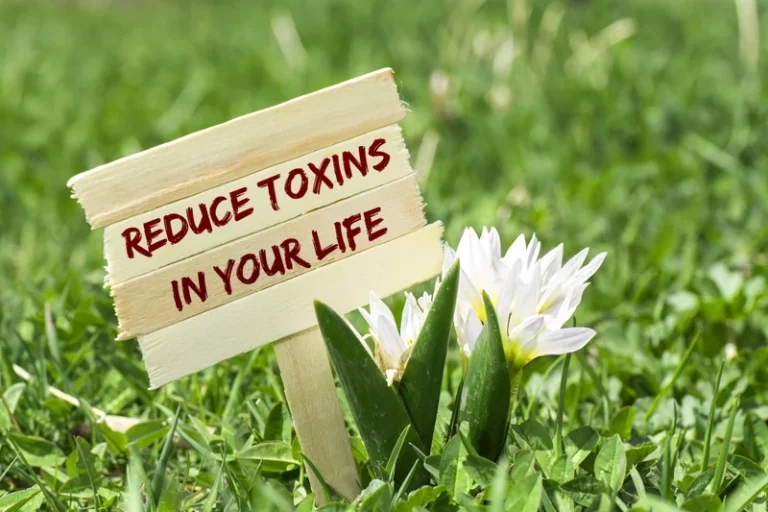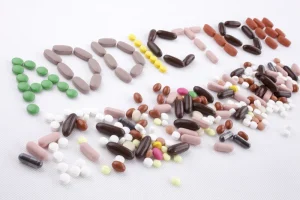Alcohol Addiction: Signs, Complications, and Recovery
At each of AAC’s treatment centers, a caring and compassionate addiction treatment team develops an individualized treatment plan for your loved one based on their needs. To learn more about the rehabilitation services we offer, visit our addiction treatment centers page. NIAAA cannot endorse any treatment providers nor be responsible for the options ultimately chosen. The NIAAA Alcohol Treatment Navigator® cannot ensure that the search process will deliver higher-quality treatment providers in your vicinity who are using evidence-based approaches.

There may also be recovery resources available in your community. Remember that relapse is part of recovery for many individuals, and your loved one may be one of them. Instead, relapse indicates that additional and/or a different form of treatment is necessary. If you are seeking treatment for yourself, you are taking an important step in your route to recovery.
How do behavioral therapies treat drug addiction?
In this section, learn more about AUD, the professional treatment options available, and why different people may take different routes to recovery. If your pattern of drinking results in repeated significant distress and problems functioning in your daily life, you likely have alcohol use disorder. However, even a mild disorder can escalate and lead to serious problems, so early treatment is important. Self-guided programs such as these can be added to an overall treatment plan led by a health care professional. The one that’s right for you depends on your situation and your goals. Many people find that a combination of treatments works best, and you can get them together through a program.
Some people just need a short, focused counseling session. Others may want one-on-one therapy for a longer time to deal with issues like anxiety or depression. Alcohol use can have a big effect on the people close to you, so couples or family therapy can help, too.
Helping Someone with a Drug Addiction
Choose the right time to have this important conversation. Have the conversation in a place where you know you’ll have quiet and privacy. You’ll also want to avoid any interruptions so that you both have each other’s full attention. Make sure your person is not upset or preoccupied with other issues.
Your healthcare provider can help you evaluate the pros and cons of each. If you have any of these symptoms, your drinking may already be a cause for concern. The more symptoms you have, the more urgent the https://ecosoberhouse.com/ need for change. A health professional can conduct a formal assessment of your symptoms to see if AUD is present. For an online assessment of your drinking pattern, go to RethinkingDrinking.niaaa.nih.gov.
SAMHSA’s National Helpline
Dependency is often accompanied by certain mood or mental health conditions like depression or anxiety. Along with your treatment for AUD, you may need to seek medical care for other complications you experience. Recovery can take a long time, so you may need ongoing treatment. Instead, these are groups of people who have alcohol use disorder.
- The condition can range from mild to severe and is diagnosed when a patient answers “yes” to two or more of the following questions.
- These tips can help you get started on the road to recovery.
- Another analysis of the data found that the drug was effective at significantly reducing alcohol intake–but only in the participants who qualified as obese.
- Learn ways to compare the quality of your options and make the best choice for your situation.
Depending on the severity of your addiction, residential treatment may last at least a month and up to several months. Intensive inpatient service often takes place in a hospital setting, where attentive medical staff are available around the clock to monitor your health and care for your immediate needs. In outpatient programs, you return home at the end of a session. This allows you to maintain more daily independence and gives you an opportunity to practice your newly learned coping skills in your home environment.
Our addiction medicine care teams can help members with severe SUD stop drinking or using drugs safely and comfortably. This doesn’t treat SUD, but it’s an important first step toward recovery for the members who need it. A Booklet for Families
Created for family members of people with alcohol abuse or drug abuse problems. Answers questions about substance abuse, its symptoms, different types of treatment, and recovery. Addresses concerns of children of parents with substance use/abuse problems.
- Counseling can help members with SUD explore the reasons behind their drug or alcohol use and come up with new, healthy coping strategies.
- Specific details can vary, but programs typically involve a combination of individual and group therapy, educational sessions, and self-help and peer support meetings.
- Make meetings a priority – Join a recovery support group, such as Alcoholics Anonymous (AA), and attend meetings regularly.
- In 2011, researchers in India found that a drug called liraglutide, a GLP-1 receptor used to treat diabetes, significantly reduced alcohol intake in a small group of patients.
- It’s appropriate in instances when your body has become physiologically dependent on alcohol and safely discontinuing use requires medical supervision.
It can be especially effective for members who also have a mental health condition, or who started using to deal with distressing emotions, trauma, or excessive stress. We offer individual and group therapy for all our https://ecosoberhouse.com/article/alcohol-help-now-where-to-get-help-for-alcohol-addiction/ members. Call your local mental health or addiction medicine department or reach out to your personal doctor. When alcoholism affects a spouse or partner, it’s possible to become too wrapped up in their well-being.
Long-term outlook for alcohol use disorder
The Navigator helps adults find alcohol treatment for themselves or an adult loved one. If you are seeking help for a teen, check out these recommended adolescent treatment resources. Find board-certified addiction psychiatrists for mental health care. See the Navigator’s summary of five signs of quality alcohol treatment. See 10 recommended questions to ask therapists in Step 2.
- Publicado en Sober living
Tattoo Addiction: Traits, Risks, Assessment & Treatment

These simple yet profound phrases encapsulate the essence of living in the present moment and focusing on each day’s progress rather than overwhelming oneself with thoughts of long-term goals. Depending on the nature of the art, it can be a reminder of a person who is important as an inspiration, whether alive or passed on. Many Alcoholics Anonymous tattoos are a https://ecosoberhouse.com/ source of inspiration as well, with the AA logo, the triangle-shaped AA logo, and even a sobriety coin being used as inspiration. Now, I’ve always been a fan of these fluttery creatures, but not just for their ethereal beauty. The journey of a caterpillar to a butterfly – that’s metamorphosis for ya – has a deep parallel with the path from addiction to sobriety.

Double Triangle Tattoo Designs With Meaning
- This ink captures time standing still with a clock face and cityscape; it’s perfect for those on a sobriety journey, symbolizing lasting change.
- Mental health professionals provide clinical evaluations and develop tailored treatment plans based on individual needs.
- Another popular choice is getting one’s sobriety date tattooed as a reminder of their journey.
If your ever in Atlanta and want to stop by the studio here’s our address. A bird flying from it’s cage is a poignant symbol that so many addicts in recovery can relate to. VeoTag is a lifestyle blog where you find all the latest viral News & Videos and Lifestyle Tips that add value to your life.
The 2% Tattoo and Others With Specific Meanings

It gives them the opportunity to embrace their past experiences and turn them into symbols of triumph and resilience. Similarly, the semi-colon in the world of sobriety symbolizes the choice to continue your life’s story. Often inked on wrists or behind ears, the symbol signifies the strength to persevere and create a new narrative. It empowers the idea that you don’t have to erase your story but rather take the pen in your own hands and write an ending YOU want to read.
Expressing Yourself Through Ink
- These few words are the perfect reminder of the limitations and strengths of people fighting to stay sober.
- Pharmacotherapy involves the use of medications to manage mental health disorders that contribute to addictive behaviors.
- When it comes to sobriety tattoos, the warrior design stands out with its rich symbolism and ornate details.
- This is because abstract tattoos use shapes, colors and symbols to help express a deeper emotion or experience that is too complex to express with your typical tattoo style.
There are actually a few different symbols for sobriety and sobriety tattoos. If you are a recovering alcoholic, then you may want to consider the Alcoholics Anonymous symbol which is a triangle inside of a circle. This is because sobriety tattoos are often quite personal to the individual getting inked. Also, lotus sobriety tattoos can also be a great reminder to steer clear of the people who can drag you back into your addiction.

Dotwork Tattoos: Detailed Designs for Men & Women
It’s a rollercoaster of highs and lows, trials and triumphs, all leading to a new, vibrant life. Sometimes, geometric shapes do the trick, and that’s where the AA triangle comes in. Emblematic of the 12-step program to quit drinking, it’s a potent symbol of recovery.
Now, this one’s a shout-out to the unsung heroes who’ve braved the storm of addiction and have sought help from the strong pillars of support groups. To wear the double ‘A’ design is a mark of pride, a badge of honor showcasing their journey to recovery. Due to this, the symbols that you can use for your sobriety tattoo include the chakra, mandala, the tree of life, etc.

- By wearing their clothing, individuals can showcase their dedication to sobriety and inspire others who may be on a similar path.
- This is a pretty simplistic sobriety tattoo and is a great idea if you are interested in small sobriety tattoos.
- Since a clock with a time and date is quite discreet, you are free to make it a bigger tattoo.
If you want to document the exact time you made the choice to fight your addiction, a clock with a date can be a great reminder of when you made your courageous decision. This tattoo can take many shapes and sizes, but since a clock with a time and date is fairly discreet, you can choose to make this a larger tattoo. This will allow sobriety tattoos you to get fairly decorative with the artistic elements in your recovery piece and still have a great reminder of your choice for a different path. While it is most common to get the whole serenity prayer inked on one’s body, some people may choose to highlight a few keywords to make it more personal or less of a larger piece.
AA Sobriety Tattoos

If you want to keep it simple with your sobriety tattoo, then you can just have a few of the words inked on you. For a sobriety tattoo that is more meaningful, you can get the whole serenity prayer. Support groups are gatherings of individuals who share similar experiences or challenges, providing mutual support and encouragement. For tattoo addiction, support groups such as Group Therapy and 12-step Programs (e.g., Alcoholics Anonymous) offer a sense of community and shared understanding.
Always seek the advice of a physician or qualified health provider with questions regarding a medical condition. Such tattoos not only provide solace and comfort but also raise awareness about the devastating impact of addiction, fostering conversations and understanding. It serves as a beautiful, subtle representation of the inner metamorphosis an addict experiences through his recovery. From a sluggish caterpillar cocooned into the shackles of addiction to a beautiful creature free to explore the world. Especially with a larger tattoo, this can be a legitimate concern, one of the reasons it is important to carefully weigh the decision before getting inked.
- Publicado en Sober living
The Collaborative Study on the Genetics of Alcoholism: An Update PMC

One such successful study performed exon-focused sequencing of impulsive individuals derived from a Finnish population isolate and identified a stop codon in HTR2B (1% frequency) that was unique to Finns. The stop codon carriers performed violently impulsive acts, but only whilst intoxicated with alcohol [85]. Despite the evidence supporting the prominence of genetic factors in AUD’s etiology, the identification of genetic risk variants has been difficult and labor intensive. With recent advances in technology, the most promising results stem from recent GWAS, which have helped to identify new variants in the genetics of AUD. Among the variants identified, the most significant SNPs remain in the alcohol metabolism enzyme genes, ADH and ALDH. Importantly, the prevalence of the various isoforms of ADH and ALDH differs among ethnicities and populations.
Supplementary Tables
- The manuscript was written by H.R.K., H. Zhou, R.L.K., R.V.S. and J.G., with comments provided by all other authors.
- COGA’s family-based structure, multimodal assessment with gold-standard clinical and neurophysiological data, and the availability of prospective longitudinal phenotyping continues to provide insights into the etiology of AUD and related disorders.
- As larger samples areassembled and more variants analyzed, a much fuller picture of the many genesand pathways that impact risk will be discovered.
- For example, Hess et al.140 created a “polygenic resilience score” for schizophrenia by matching unaffected individuals at high genetic risk with risk‐matched cases, and then identifying genetic variants that contribute to resilience to schizophrenia and do not overlap with risk loci.
- The data from the second part of the split sample—the replication sample, which comprised 1,295 people from 157 families—generally supported the initial findings (Foroud et al. 2000).
- Many factors are involved in the development of AUD, but having a relative, or relatives, living with AUD may account for almost one-half of your individual risk.
Many approaches to creating polygenic scores, from linkage disequilibrium (LD) clumping or pruning and thresholding approaches, to modern Bayesian methods, and even functional polygenic signatures, are available. COGA is one of the few family‐based genetic projects with a significant number of African Americans, who are greatly underrepresented in such studies, particularly those with family‐based designs. Analyses of 987 people from 105 families in the initial sample provided evidence that regions on 3 chromosomes contained genes that increase the risk for alcoholism (Reich et al. 1998). The strongest evidence was for regions on chromosomes 1 and 7, with more modest evidence for a region on chromosome 2. The DNA regions identified through these analyses were broad, as is typical for studies of complex genetic diseases, and therefore are likely to contain numerous genes.
Your RSS Feed
Abundant evidence indicates thatalcoholism is a complex genetic disease, with variations in a large number ofgenes affecting risk. Some of these genes have been identified, including twogenes of alcohol metabolism, ADH1B and ALDH2,that have the strongest known affects on risk for alcoholism. Studies arerevealing other genes in which variants impact risk for alcoholism or relatedtraits, including GABRA2, CHRM2,KCNJ6, and AUTS2. As larger samples areassembled and more variants analyzed, a much fuller picture of the many genesand pathways that impact risk will be discovered. Given such findings, molecular genetics studies have attempted to identify specific variation within the genome related to increased risk for AUD. Early work in the field focused on genome-wide linkage and candidate gene association studies.
- Their studies have shown that genes like ADH1B and ALDH2 are crucial in alcohol metabolism, with specific variants more prevalent in the Asian population.
- Linkage studies are limited in terms of their spatial resolution, and thus, association studies that measure differences in allele frequencies between ‘case’ and ‘control’ populations were also pursued.
- The purpose of the Collaborative Study on the Genetics of Alcoholism (COGA) is to advance knowledge about the complex influences of gene and environment on development and progression of alcohol use disorder (AUD).
- Those immersed in high-stress occupations or environments often tend to heavy alcohol consumption, more so than those in less stressful situations.
- Significant genetic correlations for AUD-adjusted for BMI did not differ substantially from those for AUD alone.
Supplementary Data 24

The AUDIT, a 10-item, self-reported test developed by the World Health Organization as a screen for hazardous and harmful drinking4,5 has been used for genome-wide association studies (GWASs) both as a total score6,7,8 and as the AUDIT-Consumption (AUDIT-C) and AUDIT-Problems (AUDIT-P) sub-scores8. The three-item AUDIT-C measures the frequency and quantity of usual drinking and the frequency of binge drinking, while the 7-item AUDIT-P measures alcohol-related problems. While the recent use of GWAS to identify the underlying genetic components of AUD has been promising, there are several limitations of GWAS that must be considered. GWAS use a ‘hypothesis-free’ design by genotyping hundreds of thousands to 2 million markers simultaneously in cases and controls.

Genes contributing to the risk of alcohol dependence
Analysis of such electrophysiological data may reveal a subset of genes that affect these quantitative, biological phenotypes related to alcoholism (Porjesz et al. 1998, 2002). One component of an ERP is a brain wave called P300, which typically occurs 300 milliseconds after a stimulus. Previous studies had found that a reduced amplitude https://ecosoberhouse.com/ of the P300 wave is a heritable phenotype that correlates with alcohol dependence and other psychiatric disorders (Porjesz et al. 1998). The genetic analyses of the COGA participants identified four regions, on chromosomes 2, 5, 6, and 13, that appear to contain genes affecting the amplitude of the P300 (Begleiter et al. 1998).

The Neuroscience Behind Alcohol Dependence
Over the past decade there have been tremendous advances in large scale SNP genotyping technologies and next generation sequencing and these technologies, including GWAS arrays and whole genome sequencing, are now widely available. Results of GWAS suggest that numerous common variants with very small effect and potentially rare variants with large effects are likely to encode proteins within, or regulate, numerous biological pathways. The current hope is that with very large sample sizes, GWAS will provide novel information about genetic underpinnings of alcoholism, including gene pathways that are altered in disease. The strongest and most consistent findings for GWAS for AUD are for alcohol metabolizing genes, as in a recent study in an East Asian (Korean) sample of alcoholics in which ALDH2 and ADH1B showed up as GWAS signals with genome-wide significance [68].
The region on chromosome 1 provided the strongest evidence for a susceptibility gene in the combined sample. In addition, this new evaluation detected a region on chromosome 8 that was linked with the risk for alcoholism. Despite the significant genetic overlap between the AUDIT-C and AUD diagnosis, downstream analyses revealed biologically meaningful points of divergence. The AUDIT-C yielded some GWS findings that did not overlap with those for AUD, which reflects genetic independence of the traits. This broadens our previous observations using SNPs in ADH1B, in which we validated the AUDIT-C score as an alcohol-related phenotype33. In that study, after accounting for the effects of AUDIT-C score, AUD diagnoses accounted for unique variance in the frequency of ADH1B minor alleles.
Association with chromatin interactions in brain
The rate at which acetaldehyde is produced and converted to the waste product acetate is influenced by genetic variations encoding the isoenzymes of ADH and ALDH. Individuals with isoforms of ADH that oxidize ethanol at a faster rate and/or isoforms of ALDH genetics of alcoholism that oxidize acetaldehyde at a slower rate are protected against AUD due to the unpleasant effects that result from acetaldehyde accumulation. Research using family, adoption, and twin studies was the first to demonstrate the role of genetics in AUD.
- Although information such as family history can currently be used to identify at-risk individuals, understanding the genetic architecture of AUD could enable us to pinpoint these individuals with greater certainty.
- Over the past few years numerous whole genome linkage studies have been performed in which the inheritance of phenotypes and genetic markers is followed in families [12,40].
- In addition, this new evaluation detected a region on chromosome 8 that was linked with the risk for alcoholism.
- A review of studies from 2020, which looked at a genome-wide analysis of more than 435,000 people, found 29 different genetic variants that increased the risk of problematic drinking.
- Over the past decade there have been tremendous advances in large scale SNP genotyping technologies and next generation sequencing and these technologies, including GWAS arrays and whole genome sequencing, are now widely available.
- Publicado en Sober living
- 1
- 2